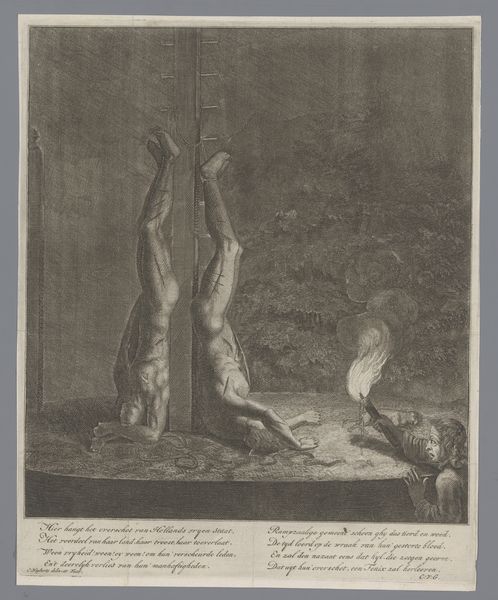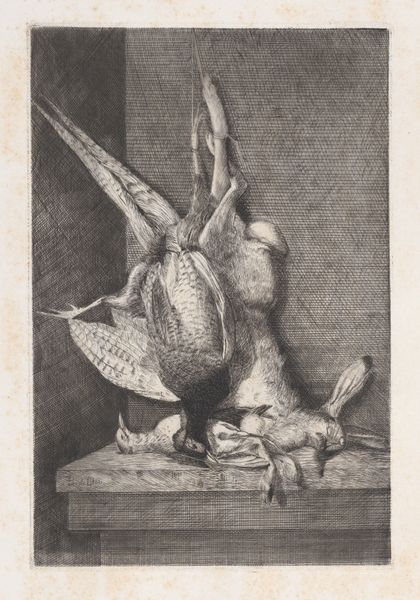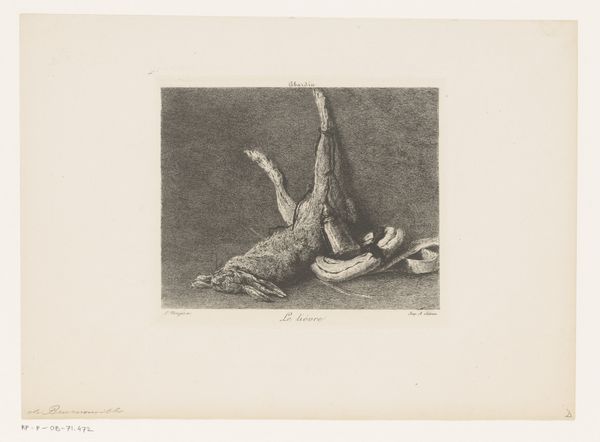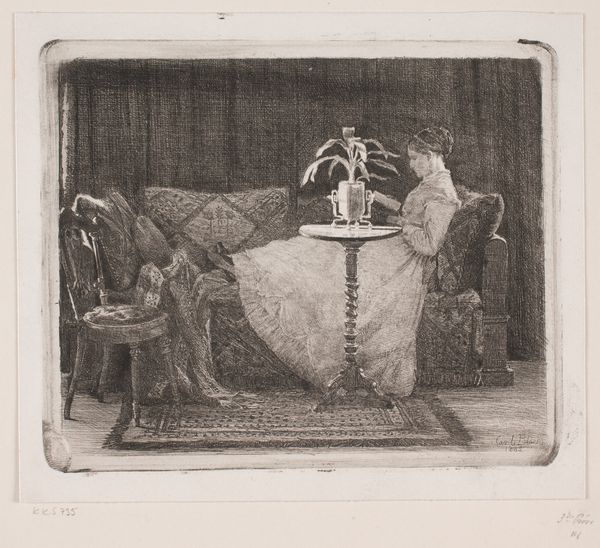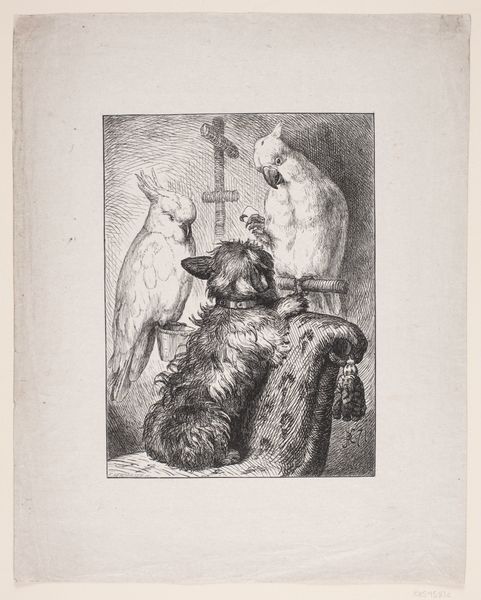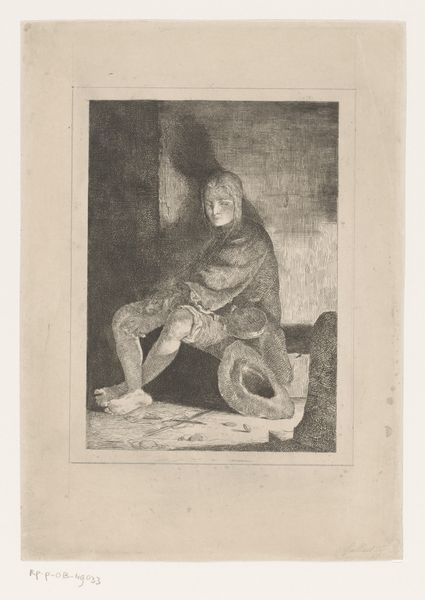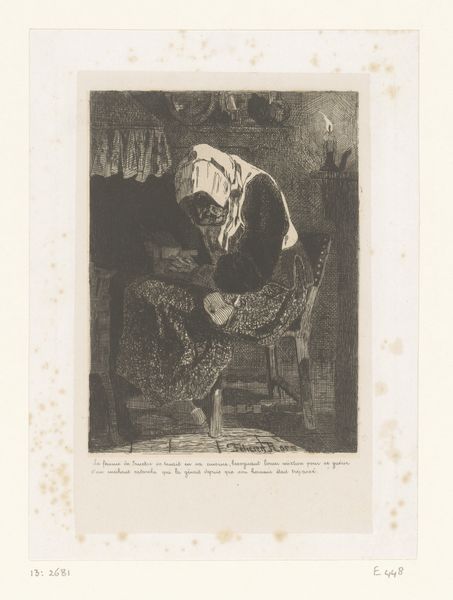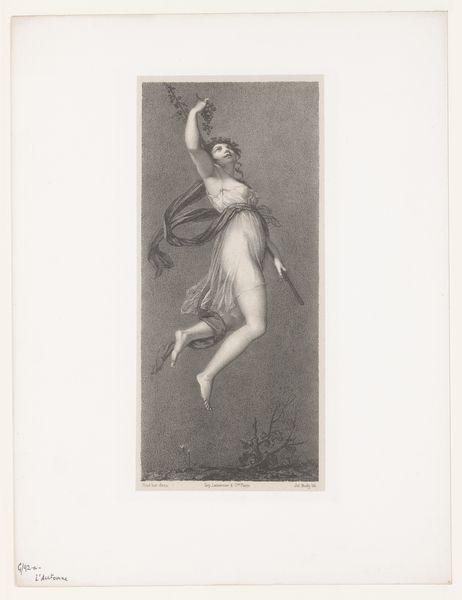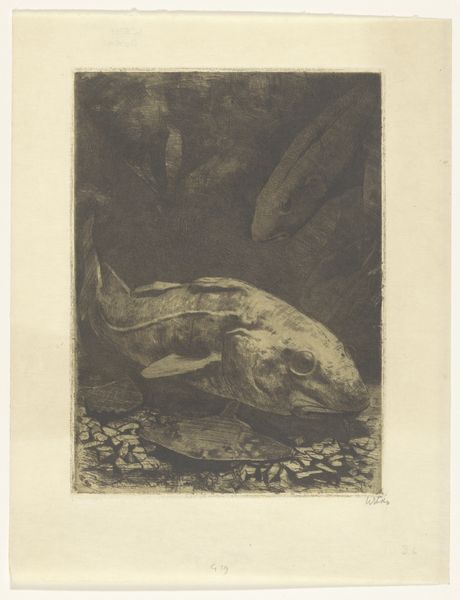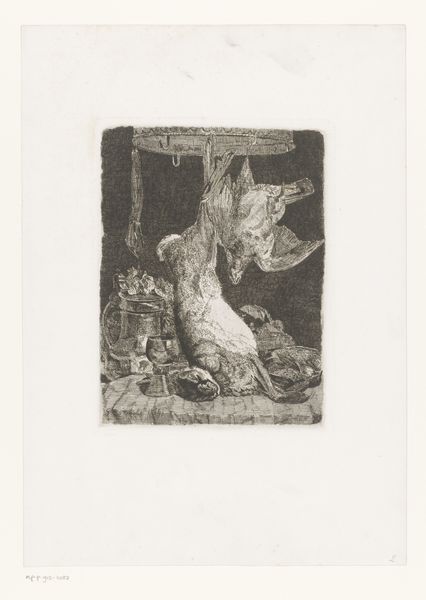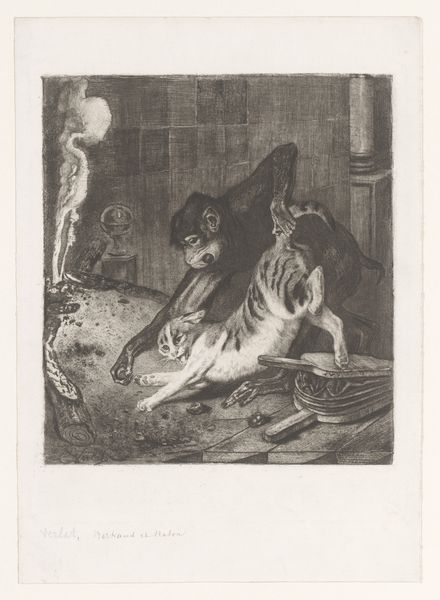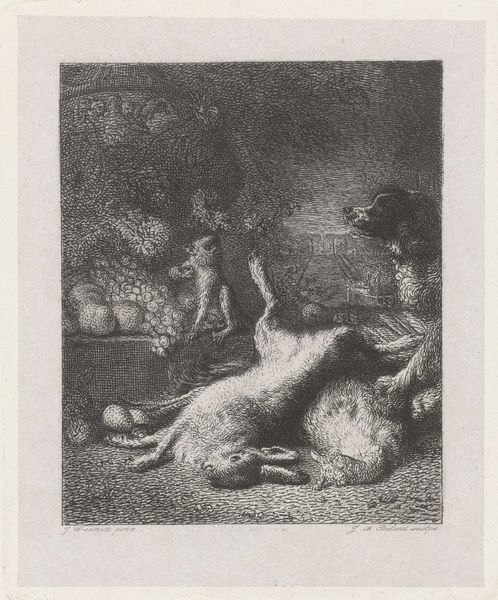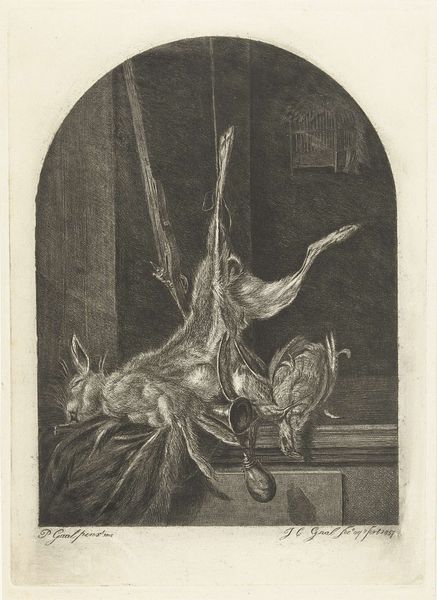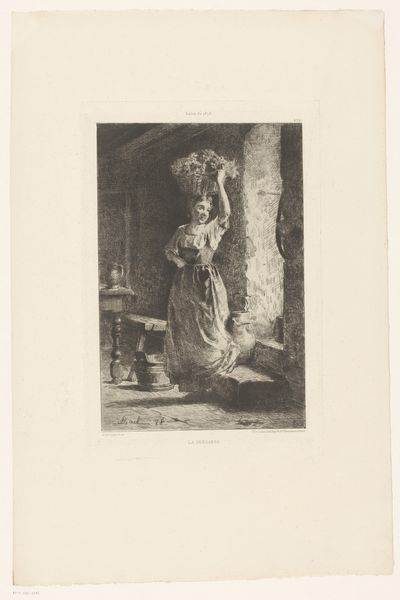
Dimensions: height 337 mm, width 242 mm
Copyright: Rijks Museum: Open Domain
Editor: This is L\u00e9on Gaucherel's "Stilleven met dode haas," created in 1865. It's an engraving, so ink on paper. The image has this unsettling feeling... almost confrontational, with the rabbit so prominently displayed. What stands out to you most about this piece? Curator: The starkness of the materials, ink and paper, is striking, especially in the context of a "still life," which traditionally flaunted luxurious goods. This print, mass-producible and widely accessible, democratizes the genre. It makes me think about the shift in the art market then, the rise of prints as commodities and how artists were adapting to this new landscape of artistic production. What labor went into this piece, and for whose consumption was it intended? Editor: That's fascinating! So, you see the printmaking process as a commentary on the democratization of art? But what about the subject matter itself – the dead hare? Does that play into your materialist perspective? Curator: Absolutely. Hunting, historically a pastime of the aristocracy, becomes accessible, even in depiction, to a broader audience. But, consider the cost: the dead hare represents labor and consumption intertwined. It forces us to acknowledge the means of obtaining food, shifting away from idealized pastoral scenes to something rawer and more grounded in reality. How does seeing it as a printed image change your initial feeling? Editor: It definitely adds a layer. Knowing it's not a unique painting but a reproduction changes the meaning. The unsettling feeling I got initially shifts towards questioning the context it was made in and for whom. It's not just a dead rabbit; it is also about production and availability of goods, right? Curator: Precisely. And perhaps the accessibility and the means by which these items find their ways to the consumer, subtly, Gaucherel questions our consumption. Editor: I didn't expect to be considering socio-economics when looking at a still life, but now, I won’t forget the labor behind the image.
Comments
No comments
Be the first to comment and join the conversation on the ultimate creative platform.
